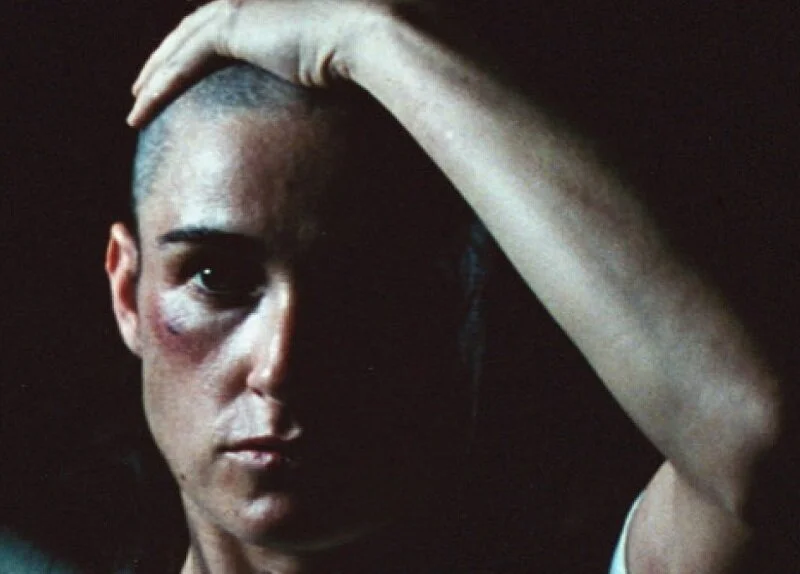Thelma & Louise, The Feminist Precursor to Marlina the Murderer
Thelma & Louise. Image courtesy of MGM.
1991’s Thelma & Louise is a feminist power ballad in which a pair of friends, Thelma (Geena Davis) and Louise (Susan Sarandon), push back against restrictive social constraints and emerge transformed, both liberated and doomed by the freedom of the outlaw life. Its feminist revenge fantasy might have been a bit ahead of its time for George Bush’s America, one where Alex P. Keaton was considered the highest of role models, but it was a trailblazing precursor for future feminist revenge takes like Marlina the Murderer by Indonesian director Mouly Surya and Quentin Tarantino’s Kill Bill.
It also helped resuscitate director Ridley Scott’s reputation. After the stunning success of Blade Runner and Alien and the 1984 Apple commercial, Scott hit a bit of a rough patch in the late 1980s. He directed Tom Cruise in Legend, a film that is both pretty terrible and somehow impossible to get out of your mind once you’ve seen Tim Curry in his full wardrobe and makeup. He had a few other mostly forgotten films, before ringing in the 1990s with Thelma & Louise, a road trip buddy film splashed with sexual violence, murder, robbery and expressions of rage against a male-dominated society.
The basic structure has our main characters, a housewife and a waitress who have put up with a lot of crap in their lives, transforming themselves over the course of the movie by embracing criminal impulses - the classic modern example is Breaking Bad, to which Thelma & Louise can also rightly be considered a precursor. It’s a classic normal person transformed through crime narrative, but in 1991 having two women fully embrace their autonomy through violence and law-breaking was not a conventional character arc. This was an era where American politicians, rather then acknowledging the failure of their own policies were particularly fond of blaming serious social problems on television movies and music, after all.
Thelma & Louise is a remarkable trailblazer in that respect. It is unapologetic about its rage, which makes the audience sympathize with the characters even as we recognize the moral dilemma in how they are dealing with it. The performances by Geena Davis and Susan Sarandon really help to sell that. But it’s also a classic example of good, economical storytelling. In the first few scenes Ridley Scott uses the medium to really establish the backgrounds of Thelma and Louise, which is crucial if we are to buy-in and support them on their journey.
In a short sequence at Thelma’s house we learn that her husband is a negligent, controlling and casually abusive jerk who keeps all the nice things for himself and gives her scraps (there is a throwaway line about what a piece of junk her car is, after we’ve just seen him drive away in a corvette with a vanity license plate that reads “THE 1.” ) So much of the essential backstory is communicated in this sequence, with the production design doing a lot of the heavy lifting in the background, that it subliminally primes the audience to better understand what is coming next.
Arguably the climax of Thelma & Louise comes in the first act, when Louise decides to impulsively shoot her friend’s would-be rapist. The rest of the film is just dealing with the fall-out, but that moment, that split second decision in which all of her rage, her feelings of powerlessness, reach a violent apotheosis is the real dramatic high point. It works on a thematic level, but it also works on a storytelling level because it’s unexpected. As the waitress from the bar later tells the detective played by Harvey Keitel: “Neither of these two was the murdering type.”
Thelma & Louise plays with narrative and social convention in this way really well. We don’t expect two women who look like this at the start of the movie:
Thelma & Louise. Image courtesy of MGM.
To end up looking like this by the end:
Thelma & Louise. Image courtesy of MGM.
Cinematically, I enjoyed watching this film because the style is very classic, elegant and takes its time. There are lots of long, languid shots and wide angles. It delights in making the sparse, desolate background of the American West into a secondary character. Most contemporary films don’t have the patience for this style of filmmaking anymore, but it lets Thelma & Louise breathe which is sort of essential to its road trip structure broken up by bursts of sudden and intense violence.
Thelma & Louise paved the way for more recent films where women who are pushed down and ignored by society decide they have had enough and take matters into their own hands. Indonesia’s Marlina the Murderer is a perfect example, in which a housewife stands up for herself after her husband’s death by decapitating her abuser. It follows a similar structure as well, with the most dramatic and momentous thing happening in the first act and the rest of the film dealing with it.
In Indonesia, as in the US in 1991, perhaps such a story will not be terribly well-received by the most conservative elements of society. But as with Thelma & Louise, whether or not society is ready for the message is irrelevant. These feminist revenge fantasies reflect real issues in the way women are treated in our societieis, and as long as that treatment persist films like these will keep getting made.







